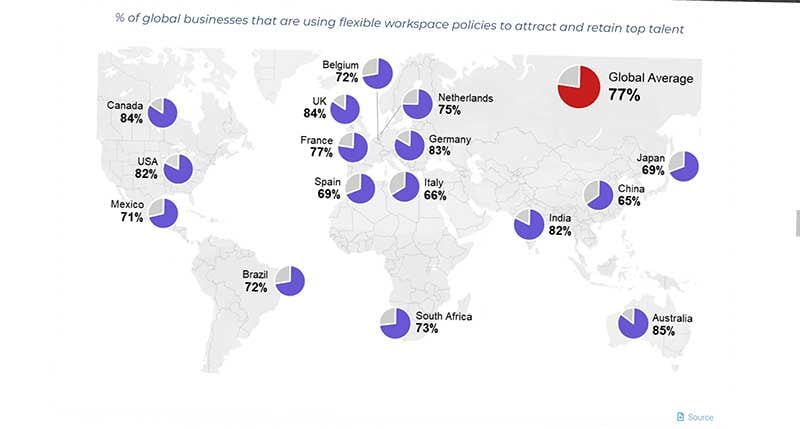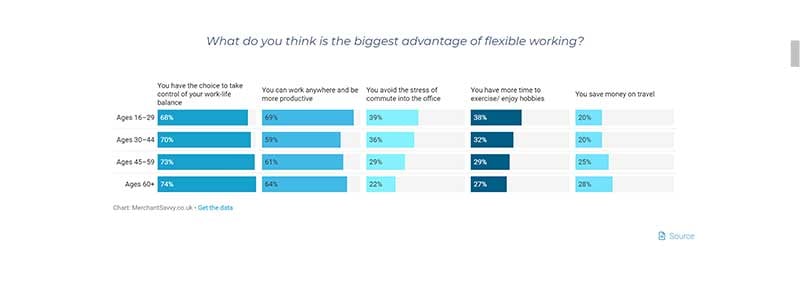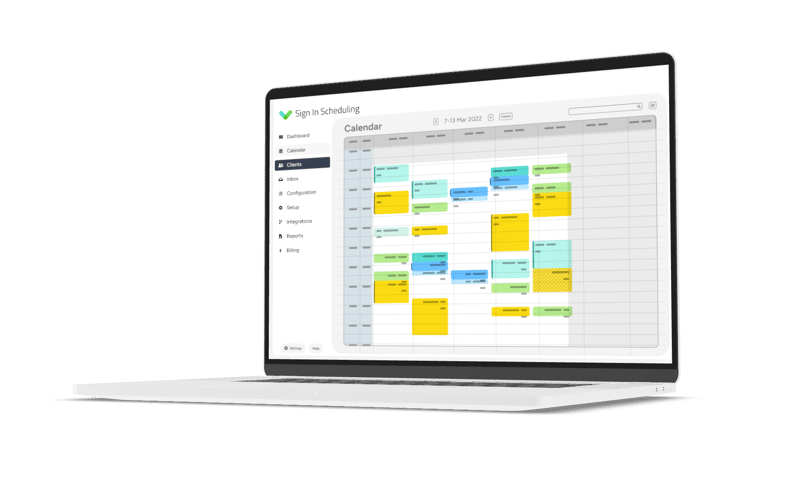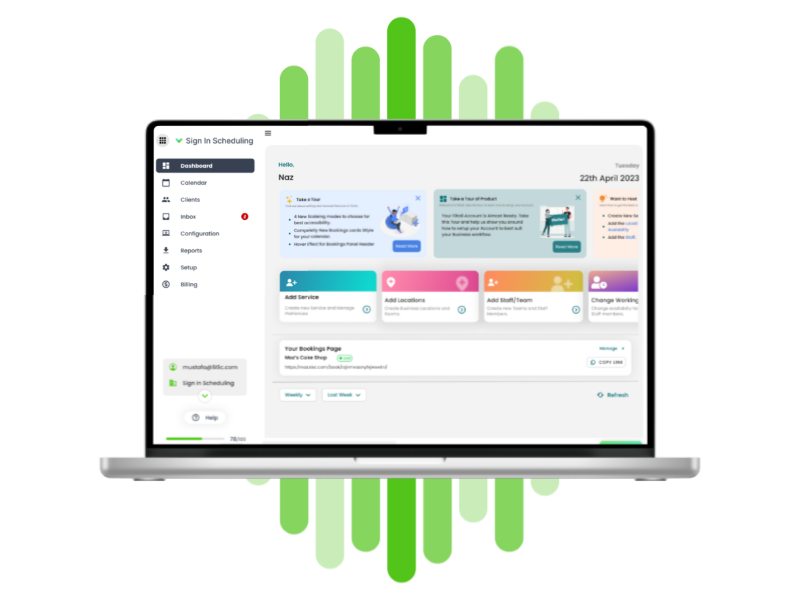Remote working has never been this popular. If you search the web for related topics, such as home...
The Beginners' Guide To Setting Up A Fully Remote Business
Remote working has been on the rise for the last couple of years. According to a recent study carried out by Merchant Savvy, 70% of the surveyed marked having a flexible work location as a key factor when evaluating new career opportunities. The research also found that 54% consider this more important than working for a prestigious company.
Remote working is not only a popular choice nowadays, but with the coronavirus pandemic, it has suddenly become urgent.

For a business that has never warmed up to the idea of allowing staff to work remotely, the switch may be quite challenging, however, it can yield great results.
The same survey showed that 80% of employees who are given the chance of working remotely reported an increase in their productivity and 77% stated that their health and wellbeing improved with the home office.
Since setting up a fully remote business environment is not easy, in this article we cover important things that you need to consider, issues you might face and tips that will help make the transition as breezy as possible. Ready to dive in?

What is a remote business?
A remote business is an organization that allows employees to work from home or from wherever they please. 100% of remote businesses usually don’t even have headquarters and can work across the country or even the whole world. These companies recognize the benefits, such as lower or eliminated office costs, reduced commuting, a wider talent pool to choose from, better employee retention and in many cases, streamlined productivity, just to mention a few.
You can learn a lot about remote working by just looking at how some of the most prestigious remote businesses operate. Here are a few that can inspire you while perfecting your processes:
- Zapier - a fully remote company that allows you to easily connect your web apps and streamline your productivity
- Articulate - a software development company that creates tools to author e-learning courses for the web and mobile
- Buffer - another fully distributed team that offers a hassle-free social media management tool for scheduling posts, tracking engagement and reporting
- Hubstaff - a software company that offers a time-tracking solution for remote teams worldwide
- FlexJobs - a company that helps job seekers find legitimate flexible and telecommuting job opportunities
How to make your business fully remote?
There’s no silver bullet, but here are a couple of work from home tips and steps that you can and should take during your journey. Every business is unique, so many of the following recommendations will depend on how you do things at your organization.
1. Outline remote working guidelines and policies
Having clear guidelines and policies for remote working is of utmost importance as they will function as the resource employees can turn to when in doubt. For creating policies that truly work, it is important that you tailor them to your organization and if needed, iterate on them. The best policies are not carved in stone - at least not at the beginning - they are consistent, easy to follow and they make sense.
How do you know if your remote working policies are good? If they become habits rather than must-follow protocols, then you have succeeded. It’s like with good dietary plans; they might seem hard to keep at the beginning, but soon they become habits that you don’t even think about.
Some good remote working policies can outline home office environment setup, device security, regular face-time with colleagues and even work chat etiquette.
2. Put more effort in onboarding
Onboarding new hires in a fully remote environment will require more effort since you don’t have the advantage of building relationships in person.
You will need to spend more time in virtual meeting rooms: have the camera on to create face-to-face engagement. Help remote employees understand your processes and support them while familiarizing them with your tech stack. They will need to understand the essence of your business and your brand.
Set expectations at the very start of the contract and make sure that new hires have all the resources and support to successfully pass probation and integrate into the company. You should catch up with the fresh hires individually on a daily basis to discover whether they know their tasks and don’t feel lost or left alone.
Make them feel welcome: your other employees should schedule 1-to-1 meet-and-greets with new joiners. During these chats, they can talk about their roles in the company and share their interests so you can all form a close-tied team.
You can also create templates that help with the onboarding process or other aspects of the job.
3. Schedule regular and recurring meetings
Being a scheduling software company, we understand how much an organized schedule counts towards efficiency and moreover, sanity. Schedule regular staff meetings to ensure company-wide communication and that everybody is kept in the loop.
Daily stand-ups will help you understand what other team members are working on, whether they are stuck on anything and how their availability looks like for the day. Weekly meetings to discuss projects and report on progress made are also important.
For teams that work closely together, such as Customer Support and Engineering or Sales and Marketing, you might also want to arrange weekly meetings to ensure alignment.
4. Educate employees on remote working best practices
Remote working environments are completely different than office spaces and so staff need to have a different approach towards this setup. It’s important that you educate each other on how to work efficiently from home and what kinds of actions to put in place to both maximize productivity and ensure that work and personal life are balanced.
Respect the working hours of your teammates and avoid after hour messages. Even if you work flexible hours at your company, when somebody is offline, it should be respected.
5. Line managers should care even more
MerchantSavvy’s study showed that 19% of remote workers get lonely on occasion. Line managers should look after their teams and even each other. Scheduling regular meetings, virtual coffee-chats and having the webcam turned on can make a big difference.
In crisis situations such as the current COVID-19 outbreak, it might be a good idea for line managers to schedule regular one-to-ones with their teammates and talk about things outside of work. Getting a general feel of the mental health of an employee can go a long way.
Of course, don’t dig in too deep into personal lives, but if your teammates care to share something, listen to them. Keep it professional, as, at the end of the day, you are their manager, not their counselor.
6. Conduct regular reviews
Getting a general feel of how employees do within your organization can help with better retaining staff. In a remote working environment, you have fewer interactions a day, so it is generally more difficult to ‘get a feel’ of somebody’s mental health.
Software solutions such as CharlieHR and Culture Amp make this process much easier, as they enable you to schedule regular reviews, create templates and analyze results.
Make sure though that employees don’t feel like their work is under the magnifying glass. The reviews should just as much be about the business’ responsibilities towards the employee as the employee’s performance.
We can all agree that trust is hard to gain, but it is essential for a well-functioning organization. Arguably, trust plays an even bigger role when trying to master managing remote teams. Nevertheless, laying trust in your employees can go a long way and have great effects on employee-loyalty.
7. Organize regular team outings or innings
You don’t need to have a huge budget to arrange regular outings. A monthly visit to the pub or Friday Fiesta with some pizza can be just as rewarding as a fancy 5-day cruise to the Caribbean. Okay, that’s probably not true, but what I mean is that the thought is what counts.
At times of complete self-isolation and lockdowns, you can still organize social innings. (Like that was a word.) Playing a video game together or having lunch in front of the screen might sound weird, but it’s still better than sitting alone in a room for months doing nothing but work.
At 10to8, for example, we used to have an in-person Friday Fiesta when everybody was present in our office. Now we moved this to a virtual space, but we still have a ‘State of the Nation’ from our MD and CEO followed by a presentation from a team member.
8. Build knowledge bases
It’s a good idea in general to have expertise shared within the organization and it should definitely be part of your business continuity plan. In a remote environment, however, this can also shorten the initial onboarding period and boost productivity further down the line.
Create knowledge base articles and record short videos, training demos that help other team members carry out tasks they are not yet trained for. Make sure that the training material is accessible for everybody and staff is aware where to find such material.
Keep articles and videos short and simple but detailed enough to actually be useful.
9. Find the right tech stack for remote working
A big part of setting up a remote business is finding the right software solutions that help the whole business, including managers and team members alike.
We’ve talked a lot about scheduling staff meetings and 1-to-1 face-times, so unsurprisingly, scheduling software will be one of the most important tools in your tech stack.
10to8 is designed for remote businesses as it enables teams to spread across multiple locations and even time zones to seamlessly collaborate. You can book meetings with multiple staff members and jump on Zoom calls straight from your calendar. The email and SMS reminders will ensure that nobody forgets an upcoming meeting. What’s more you can also use 10to8 to schedule virtual appointments with clients if you need to. With the thousands of Zapier integrations available, you can sync up all your remote working software tools.

Here are some other must-have apps for your toolkit:
- Video Conferencing: Your virtual meetings will take place via a video chat tool, so you need to find one that fits your needs. We recommend Zoom Video Conferencing as it integrates with 10to8 and has amazing features such as screen-sharing, virtual backgrounds, screen recording and chat for sharing links. Google Hangouts or Skype can be great alternatives.
- Work chat: You won’t always jump on a call, sometimes you just need to ping a quick message to someone and email is neither safe nor efficient. Slack or Facebook Workplace is perfect for one-liners and regular check-in messages.
- Cloud storage: To collaborate on documents, share policies and make knowledge-base articles available for all teams, cloud storage is essential. Google Drive or Dropbox are two of the most popular choices.
- Task management: You will probably need a project management tool such as Asana or Monday, where you can track progress on projects and tickets.
- HR software: As discussed above, conducting reviews is an important part of remote working, and CharlieHR and Culture Amp can work really well. Tracking holidays and sick leaves are also part of HR software.
- Time tracking: Not everybody will implement time tracking applications, but if you feel the need to do this Hubstaff or RescueTime can serve you well.
To find our selection of the best remote working apps with brief descriptions on what they do and why we deem them to be the best on the market, check out these posts:
The best software tools for remote workers
The best software solutions for managing remote teams
Let us know in the comments about how you're getting on with making your business fully remote. We’re happy to help out with questions. You can also share tips or your favorite tools.






Blog comments